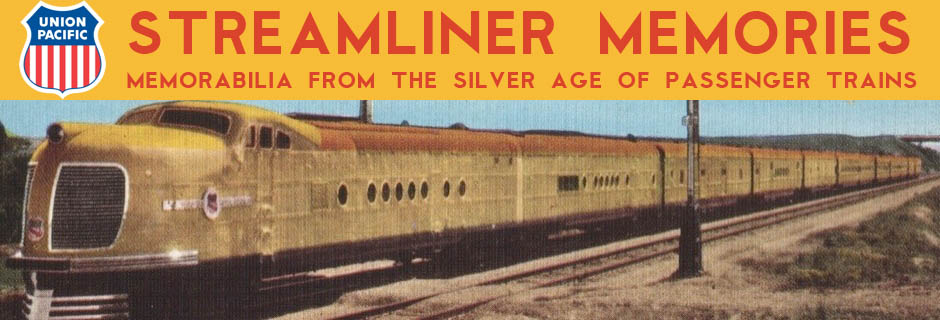For this timetable, the Mainstreeter was combined with the Black Hawk in both directions while the Western Star ran 30 minutes ahead of the two westbound and 10 minutes ahead eastbound. This means Burlington was running seven trains in each direction between Chicago and the Twin Cities.
 Click image to download a 23.0-MB PDF of this 36-page timetable.
Click image to download a 23.0-MB PDF of this 36-page timetable.
It makes sense that the Western Star might deserve its own schedule as it was a superior train to the Mainstreeter in every way and thus probably attracted more passengers. At least when it started, the Mainstreeter had streamlined coaches but was otherwise mostly a heavyweight (meaning older) train, while the Star was fully streamlined. Among other things, this meant the Western Star‘s lounges and diner were much brighter and cheerier than those on the Mainstreeter. Indeed, in 1953 the Western Star‘s cafe-lounge and diner were brighter and cheerier than those on the North Coast Limited.
These differences were reflected in the ridership. In the early 1950s, the Star typically sent two to three coaches and three to five sleepers to Chicago, while the Mainstreeter was often just one coach and two sleepers. Plus the Great Northern had sufficient streamlined equipment to run relatively new diners and lounges to Chicago while the NP did not and had to rely on the Burlington to provide food services on the Chicago-St. Paul segment.
Beyond these scheduling changes, there’s a momentous change on the front cover of this timetable — at least, momentous for Burlington timetables, which hardly seemed to change from year to year. Where the previous timetable, shown here yesterday, had a shovel-nosed Zephyr on the left and an E5 pulling a vista-dome Zephyr on the right, this one has the E5 vista-dome train on both panels.
Before 1922, Burlington timetable covers listed destinations and advertised low rates. From 1922 to 1932, the covers had the slogans “The National Park Line” and “Everywhere West.” From 1933 to 1941, the “Everywhere West” slogan was paired with a list of Burlington’s most important trains.
From 1942 through 1948, the left panels showed a steam-powered passenger train while the right panels had shovel-nosed Zephyrs. From 1949 through 1952, the shovel-nosed Zephyrs were on the left while the right panels had the E5 pulling a vista-dome Zephyr. Today’s timetable represents the fifth cover change in 31 years, and most of those changes were so small many people might not have noticed.
The back cover ad is also new. The graphics showing hikers and horseback riders have been replaced by a giant sign saying “Everywhere West.” Since Burlington had used this slogan on the front of its timetables since 1922, repeating it on the back cover was pretty redundant and another example of the lack of creativity on the part of Burlington timetable designers.
